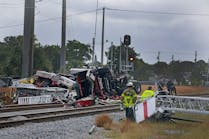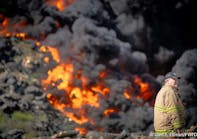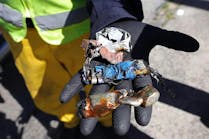Probably the most important document a public information officer (PIO) will create and disseminate is the media release, also referred to as the press release or news release. It should be treated as an official document of the fire department.
The media release is the official statement from the department concerning a certain matter or incident. It must be exact, correct and specific. Not only will the media be using this document, it will also be used by the public, insurance companies, investigators and the legal community, to name a few. Even though social media have become a popular way of providing news outlets (and the public) with information, the media release is still preferred as the official form of information.
Collect information
To start, you will need to gather the information for your release. Whether the release pertains to an incident, a special event, a promotion, a safety campaign or any other department activity, you must have all your facts together. All of the information you gather should be saved. If you are later questioned about the accuracy of a media release or asked to produce your facts, you will have them readily available. I have gone back many times to review my backup material for my releases to refresh my memory or to supply additional information to supplement a previous release.
The media release must contain information that answers these six questions: who, what, when, where, why and how. Once you have all your information, you can draft your release. Begin with a title for the release. It should give the reader an idea of what the entire release is about. You may add a second line just under the title with an important fact or statistic.
The introductory paragraph should contain two to four sentences that summarize the entire release. This is where the editors will decide whether they are interested in using the release as a news story or letting it go. You will want to use words that entice them to read on.
The second paragraph is the main body of the release and contains the when (time of the incident or event), where (address), what (house fire, rescue, special event, etc.), who (your department personnel, witness, passersby), why (what caused the incident) and how (used fire hoses, extrication tools, etc.) information in the release.
The third paragraph elaborates about the incident. This is the paragraph where you should put information about the cause of the incident and any investigation. You can also include a brief description of the damage or property saved and a damage estimate.
The fourth paragraph deals mostly with the occupants, such as how many people were involved, if they were displaced or any information about injuries. Descriptions of injuries are general in nature and should have some type of connection with the fire.
The last paragraph, which is optional, is where to put educational information related to the incident. For example, if the release is about a kitchen fire, add fire safety tips such never leave food unattended while cooking or keep combustible items away from heat sources.
At the bottom of the release, there should be an indicator that it is the end of the release. Commonly used is -30-, ### or END. If your release is more than one page, use MORE ## MORE at the bottom to indicate there is more than one page.
Once your release is complete and approved, you can then disseminate it to the media and any other outlets.
Use media releases to disseminate information about special events such as Fire Prevention Week, open houses, special fire safety campaigns or personnel promotions and appointments. There are many reasons for issuing a media release.
The release should be saved just as any other report or document. I keep one printed copy in a special notebook, one notebook for each year, so I can go back and review and make copies if needed. In the notebook I also attach to my release any backup material so it is all together if I must review. You should also keep an electronic copy on file to pull up and send electronically if requested or to use as a template for drafting future releases.
If your media release is well written, you may use it several times. One example is the annual Fire Prevention Week release. Instead of doing it from scratch, each year I use the same one; I just make a few minor changes such as dates and theme. Since most of the work is already done, it saves a lot of preparation time.
Media releases also have historical significance. They are a great way for you to go back and review previous incidents or events. It is an excellent way to refresh your memory about events that occurred several years ago.
To see my latest Las Vegas Fire & Rescue media releases, go to http://www.lasvegasnevada.gov/Publications/news_releases.htm#1001 and scroll to “Fire and Rescue.”
TIMOTHY R. SZYMANSKI has been in the fire service for 41 years and is the Public Education & Information Officer (PEIO) for Las Vegas, NV, Fire & Rescue. He has worked in every position from firefighter/paramedic to fire chief. Szymanski is a Nevada-certified Fire Service Master Instructor and holds national and state certifications in many areas of the fire service. He has received numerous awards, including the 2008 Liberty Mutual National Firemark Award for Community Education and the Community Service Award from the Nevada Broadcasters Association. He was the Fire & Emergency PIO during the 1996 Olympics in Atlanta. His website is www.firepeio.com and Twitter at firepeio.
Connect with Tim
Twitter: https://twitter.com/LasVegasFD
Facebook: https://www.facebook.com/lasvegasfd
Youtube: http://www.youtube.com/channel/UCZkLSGx-JFEr79ezh7IGZ4Q
Website: http://www.lasvegasnevada.gov/government/fire.htm
Email: [email protected]
Instagram if you want: http://www.instagram.com/lasvegasfd






